Theory of Operation
Theory of Operation explains how something works. Evans Races combines several different mechanisms in order to make the horses move. See the first page that explains how the horses move.
The explanation below shows some of the details of the operation, such as what happens when the horses reach the finish line, how the horses are returned to the start line, and how the piano roll reverses direction when it reaches the end of the roll.
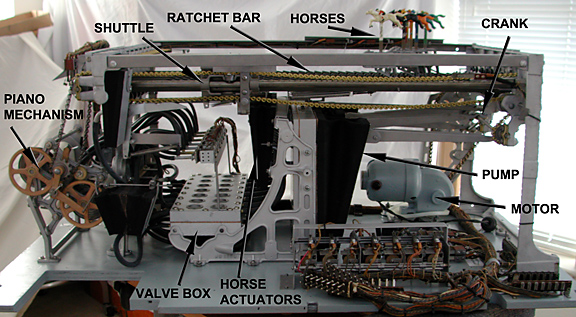
What Happens at the Finish Line
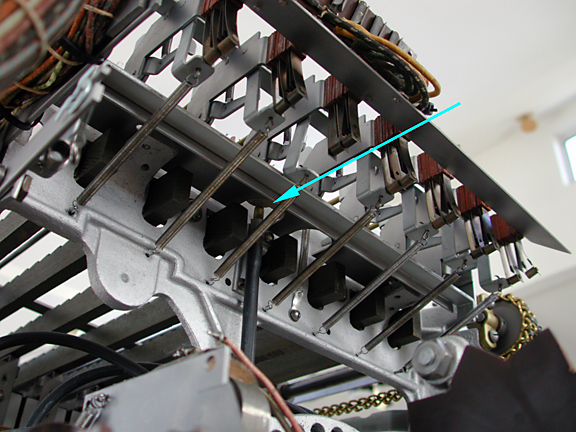
The first horse to reach the finish line trips a bar and completes a circuit with a leaf switch shown above. The green arrow points to a tube that has a leather pad on top of it. At the finish of the race the leather pad is lifted, causing a small leak in the tube.
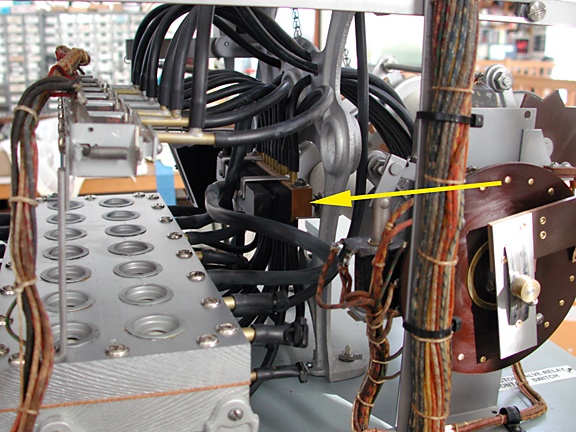
The leak causes a valve to open, releasing a vacuum into the bellows at the yellow arrow. This opens holes to each of the horses, preventing them from moving any further. This also causes a leak in a bellows that starts the reset bar moving, first pushing all the horses back to the starting line and then returning to the finish line.
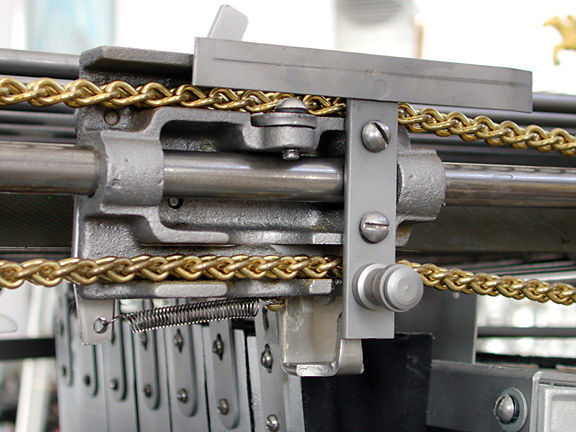
This is the shuttle that resets all the horses. The lever just showing at the top has been pushed to the right, engaging a pin into the brass ladder chain. As the motor drives the chain constantly, this attaches the shuttle to the top chain. Note the pin at the bottom, just under the bottom brass chain. It is retracted from the bottom chain but will raise up to engage the chain once the reset bar reaches the start line.
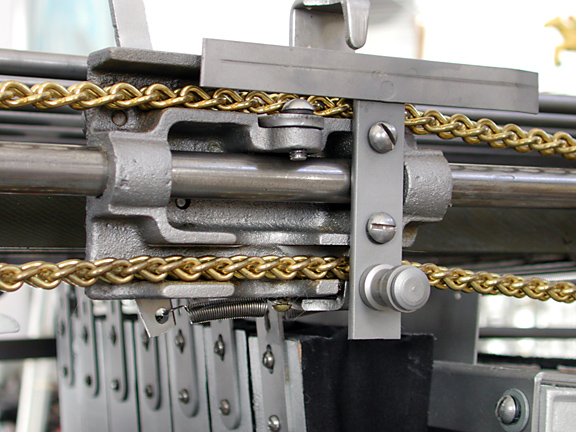
The shuttle has reached the starting line and reset all the horses. The lever just visible at the top has been pushed to the left. This causes the pin that engaged to the top chain to lift clear of the chain and the pin at the bottom of the shuttle to raise as well, engaging the bottom chain. The bottom chain is moving to the left which returns the shuttle to the finish line, out of the way of the racing horses.
Reversing the Direction of the Paper Piano Roll
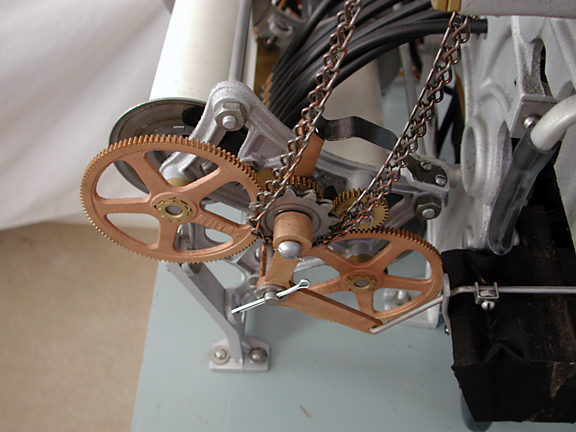
The paper piano roll is pulled across the tracker bar and is wound onto the left spool. The chain is driven by the electric motor and turns a small gear in the center, next to the chain sprocket. Once the paper roll gets close to the end, a perforation allows a leak which signals the end of the roll. The valve box sends a strong vacuum to one of the two bellows shown in the lower right. This pulls on a lever which disengages the large left gear and engages the large right gear.
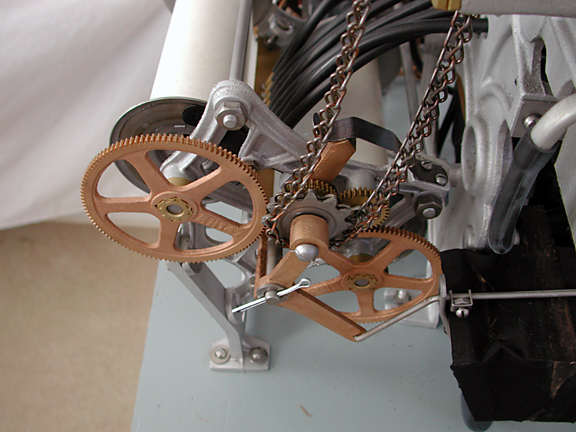
Here the sprocket and small center gear is engaged to the small idler gear, which in turn is engaged to the large gear that drives the right spool. The bellows have pushed on the lever, moving the driven gear to the right and engaging the idler gear. The idler gear reverses the direction of rotation, and the right spool starts pulling the paper onto it.
Adjusting the Vacuum
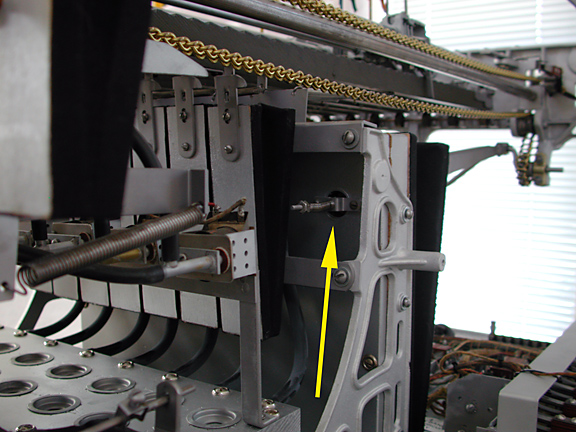
There is a vacuum relief valve on the manifold side of the pump. The spring holds a leather disc against the valve seat. Once the vacuum reaches a certain level, the spring allows the leather disc to be pulled into the manifold, allowing some air to enter, until the vacuum is back at the desired level.
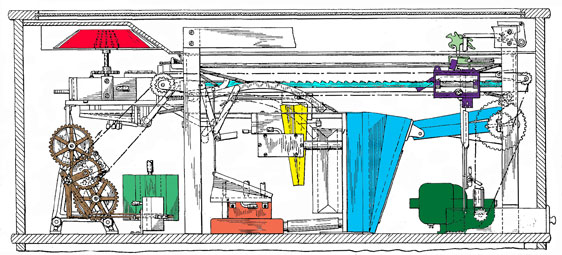
This is the original patent drawing for Paces Races. The major components are color coded.
red - the odds wheel that spins during the race and helps determine the payout
green - the electric motor that drives the chains and pump
blue - the four bellows that pump the air out of the game
brown - the piano roll mechanism
light green - the piano roll reversing bellows
orange - the valve box
yellow - the actuating bellows for the horses
blue/green - the ratchet bar that moves the horses
lime green - the horse
purple- the reset carriage that returns the horses to the start line
A separate page shows how the pneumatic valves work.
